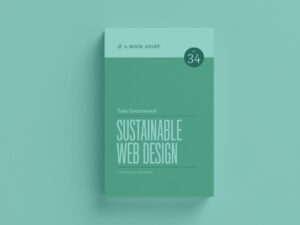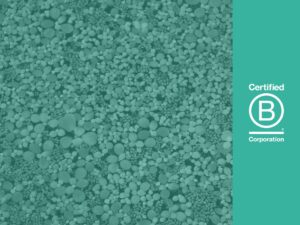
‘Lockdown’ has been named the word of the year for 2020 by Collins English Dictionary – and there’s no surprise there!
Currently experiencing Lockdown 2.0 we’ve spent months inside to protect each other and our health service. So, before we get into this blog – we just wanted to say thank you and well done. It’s far from easy, but pulling together in a crisis is what we’re good at!
A few months ago our Partnership Development Manager, Marketa, wrote a blog about the relationship between Lockdown and sustainability. Instead of baking banana bread and making focaccia art, Marketa spent her summer learning from Al Gore and becoming a certified Climate Reality Leader, culminating in her organisation of two ‘24 Hours of Reality’ sessions in October – both of which are available to watch on our YouTube Channel.
London Climate Action Week 2020
Marketa is passionate about the environment and determined to find new ways for ordinary people to make a difference. Next week, on 18th November, she is taking part in a two hour event for London Climate Action Week. Her talk will focus on the things a Digital Marketing Manager can do to support sustainability – this is a core concept of the chapter she wrote for our upcoming book, and something she has put a great deal of thought into.
Here are Marketa’s thoughts on sustainability during lockdown…
The world has been turned upside down this year. Many people have chosen to kill time by binge-watching Tiger King (Is he for real!?) and many other series, movies and documentaries.
You may have seen in the news that both Netflix and YouTube needed to reduce streaming quality to help the data centres cope with the increased demand.
Back in February, I wrote an article about Digital Sustainability. This term might be new to some you so let me catch you up. Using the internet, like almost anything else, has a carbon footprint. Quite a big one, actually.
The Internet is responsible for 2-3% of global emissions. That’s about the same as the global aviation industry.
Lowering streaming quality is a big deal from a sustainability perspective as it can reduce data consumption by 25%. Less data consumption means less energy used. And less energy means less carbon emissions.
So, how can you stay digitally sustainable during the pandemic and this second Lockdown?
Here are 10 tips to get you started:
- Green searching – Google has confirmed that every search emits approximately 0.2 grams of CO2. That may not sound like a lot but it is estimated that Google performs 3.5 billion searches per day (1.2 trillion searches per year). So if you do the math, that’s 700 tonnes of CO2 every single day just from Google searches. If you’re browsing just for fun, consider using Ecosia, a search engine that uses the ad revenue from your searches to plant trees where they are needed the most.
- Avoid video autoplay – When you scroll through posts on social media, you may be downloading video content (autoplay) even for videos that you’re not interested in. That’s a digital waste. Try to change settings on your social media channels and only watch videos you’re really interested in.
- Download your favourite music albums instead of streaming them – Streaming an album over the internet more than 27 times will likely use more energy than it takes to produce and manufacture a CD! Download your favourite tunes to your phone so that you can use your phone memory instead of streaming the data over and over again.
- Download files & videos instead of streaming them – Similarly to the above point, instead of streaming videos, audiobooks and podcasts using data, download them using WiFi. Streaming mobile data takes more energy so downloading files using WiFi before you leave your home is more energy-efficient – plus your phone battery will last longer so it’s a win, win!
- Switch to dark mode on your devices – Keeping your screens bright takes more energy than using dark mode. If your screens are bright, you are effectively lighting up every single pixel on your screen. Switching to dark mode is a very simple way to save energy (and also to give your eyes a break!)
- Avoid unnecessary emails and save 1 gram of CO2 – Mike Berners-Lee collaborated with OVO Energy on a research project called ‘Think Before You Thank that calculated the carbon footprint of unnecessary emails, i.e. emails with up to 4 words. They estimated that each unnecessary email produces 1 gram of CO2. This may not sound like a lot but think how many emails each of us sends out in a day. The research indicates that if every person in the UK sent just one less ‘thank you’ email a day for an entire year, collectively we would save 16,433 tonnes of CO2 – the equivalent of 81,152 flights to Madrid or taking 3,334 diesel cars off the road!
- Avoid REPLY ALL – We all try to keep our team members posted on the progress of our projects. Sometimes, we include them in an email because we think that it may be useful for them to know at some point in the future. But what happens is that we all end up with hundreds of irrelevant emails in our inboxes. We often just skim them quickly or don’t bother opening them at all. We already talked about the carbon footprint of an unnecessary email (approx. 1 gram of CO2). However, the amount of CO2 saved per every recipient depends on the size of the email and its attachments, which could range anywhere between 1g (unnecessary email) and 50g (email with large attachments) of CO2. So next time you send an email out, only include people who need to act on it.
- Use links over attachments – Instead of attaching large files to your emails, opt for linking to them in the email text to where they are stored online or in the cloud.
- Unsubscribe from unwanted emails – We cannot control if anyone sends us spam emails, but we can remove ourselves from mailing lists that we no longer want to be a part of. Many companies use the ‘spray and pray’ method, i.e. sending their emails to thousands of recipients and hoping that at least 10% of them will open it. That’s not a great method, both from a marketing and a sustainability point of view. Instead, companies should communicate with people who are really interested in their content. It will create a better customer experience and a better long-term relationship between the company and the client.
- Switch to a green energy provider – This is the single best way to reduce the carbon footprint of a household (not just the digital footprint). If we use green energy to power our devices and our browsing, we are significantly reducing the carbon footprint of our day-to-day activities.
What to do next
If you’d like to learn more about digital sustainability and the impact of the internet on climate change, feel free to reach out (my email is marketa.benisek@footprintdigital.co.uk). Perhaps I could deliver a Lunch&Learn presentation to your team and help you include digital sustainability in your sustainability strategy?
If you want to hear more from me, and some incredible speakers such as Neil Clark, Environment and Service Lead at Manifesto; Asim Hussain, the Green Cloud Advocacy Lead at Microsoft; and Tom Greenwood, Co-founder and MD at Wholegrain Digital, then please register for our free London Climate Action Week event next week. I’m so excited to be taking part!
Together, we can make the internet green.
So let’s get working!
(Since Lockdown, and writing our book which includes a chapter on digital sustainability in 2020, we have worked to develop a Digital Carbon Footprint Audit which helps you understand the carbon emissions of your website and how to reduce them. Find out more here).





